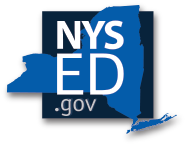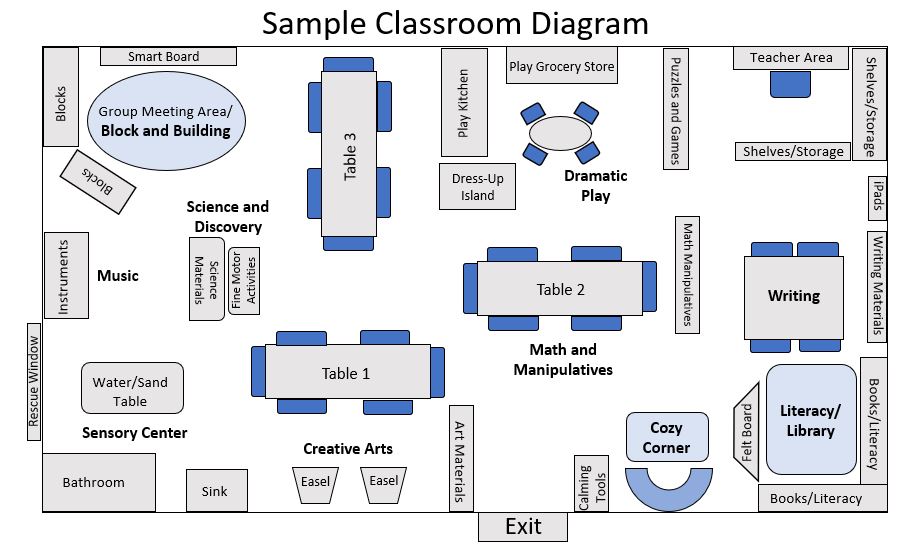Student Centered Learning Environment Best Practices
The Office of Early Learning has developed a webinar and accompanying resource document designed to help educators enhance their classroom environments. These materials provide guidance on how to effectively implement learning centers, integrate themes of study into the classroom, and incorporate student choice, highlighting the importance of student agency in the learning process.
Reflection and Resource Tool
The Reflection and Resource Tool for Creating Student Centered Learning Environments in Prekindergarten is designed to help educators thoughtfully assess and enhance their classroom environments to better support young learners. This tool provides guidance on key elements of a high-quality prekindergarten setting, including implementing learning centers, using theme to foster curiosity and deepen understanding, integrating student choice, and learning center management. By using this resource, educators can reflect on their current practices, identify areas for growth, and implement strategies that promote a responsive, engaging, and inclusive learning space.
What is a Learning Center?
Learning centers are a powerful way to engage young learners through hands-on, play-based experiences that support key areas of development such as literacy, math, science, and fine motor skills. Learning centers not only foster creativity and independence but also provide essential opportunities for children to engage in meaningful, self-directed learning. In alignment with Commissioner’s Regulations Part 151-1.3(a)(3), PreK programs are required to provide instruction that promotes children’s development across all domains of learning, and learning centers are an effective way to meet this by offering structured, choice-driven opportunities for exploration, and growth. Teachers can design centers based on student interests, classroom themes, and real-world connections, rotating materials and activities to keep centers fresh and aligned with instructional goals.
Learning centers are designated areas of the classroom where students can engage with materials to practice and strengthen their skills through play-based experiences. There are typically 10 different learning centers in a classroom. The Office of Early Learning recommends the following centers: blocks and building, dramatic play, literacy, creative arts, math and manipulatives, sensory, science and discovery, writing, music and a cozy corner.
It is essential to set up an early childhood classroom’s learning centers intentionally. By strategically selecting materials that align with educational goals, educators can create an engaging and supportive environment that goes beyond mere play, encouraging children to explore, discover, and learn in meaningful ways.
What Learning Centers Should be in my Classroom?
The Office of Early Learning recommends the following centers:
- Dramatic Play
- Blocks and Building
- Science and Discovery
- Literacy/Library
- Creative Arts
- Music
- Math and Manipulatives
- Sensory
- Writing
- Cozy Corner
Start with the centers you already have in your classroom. Complete an inventory of the materials in your centers and make a list of things you would like to add or take away. Think about what centers you might want to begin adding to your classroom. See the sample classroom learning center diagram below and drop-down menus for center ideas and materials.
Center Ideas and Materials
What are the Adults Doing?
During center time teachers and teaching assistants should be circulating around the room joining the children in centers. This will give the adults opportunities to engage in conversations with children. The teacher can ask questions, to challenge and expand children's thinking, help them find connections, and learn about their thought processes. Teachers will be helping students by facilitating rich conversations that promote language development between adults and peers. Please refer to the questions and statement cards included in the resource document. These cards can be printed and placed in each classroom center to support any adult in facilitating meaningful and engaging conversations with students.
When teachers are engaged in center play, they are encouraging curiosity, promoting collaborative play, and helping students to problem solve while modeling pro-social behavior. Teachers will also be demonstrating how to use center materials in a fun and engaging way.
Integrating the Theme
Children are more likely to be engaged and motivated when classroom activities are connected to a central learning theme. Thematic units not only expand vocabulary but also provide diverse opportunities for students to express themselves through various mediums. Themes encourage connections between different subject areas, supporting the holistic development of each child. When thoughtfully designed, thematic units of study can ignite curiosity, deepen understanding, and make learning experiences more meaningful and memorable.
In a well-integrated prekindergarten classroom, the theme of the unit is evident throughout the environment. Teachers use anchor charts, posters, pictures, student-created artwork, and decorations to visually represent the theme, creating an immersive atmosphere that reinforces the learning objectives. This integration helps students see the connections between their experiences and the content they are studying, fostering a rich and engaging learning environment.
For example, in the spring, many classrooms explore the theme of plants. In the dramatic play center, a flower shop is set up where children can role-play buying and selling flowers. In this center the teacher will place materials such as artificial flowers, plastic pots, name tags, books, writing utensils, order sheets, a cash register, and paper for receipts. In the book center, students can explore a variety of fiction and non-fiction books about plants. The listening center features a Jack and the Beanstalk felt board for children to act out while listening to the story. The sensory bin includes gardening tools, soil, and artificial flowers for hands-on exploration. In the science center, students plant their own flowers and observe the growth process. The writing center includes a word wall with words in English and students home languages reflecting the theme.
Student Choice and Why It's Important?
Children thrive when empowered with choices. Offering them opportunities to choose learning activities can foster engagement, cultivate a sense of ownership, and allow them to transition naturally between activities as their interests shift.
In early childhood classrooms, student choice is essential to creating an engaging and empowering learning environment. Rather than assigning students to specific centers, children are given the autonomy to choose which center to visit, when to go, whom to work with, and what activities to engage in. This freedom supports motivation and learning, helping children become more confident and responsible.
Students may choose to immerse themselves in a single center for the duration of the period or explore multiple centers, adapting their engagement to their evolving interests.







